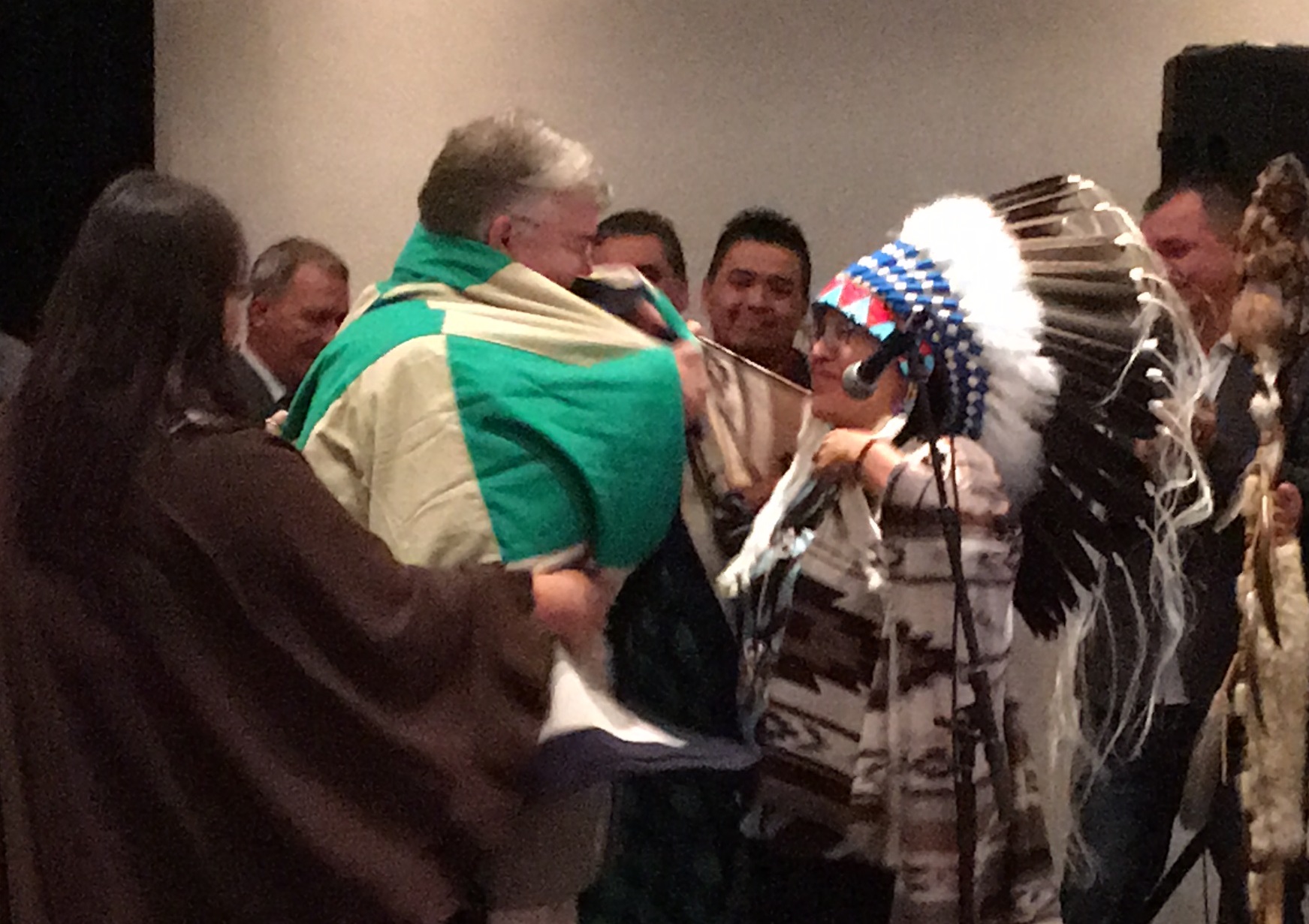Why municipalities should strengthen their relationship with Indigenous communities

Josie_Desmarais/Shutterstock.com
Josie_Desmarais/Shutterstock.com
Recommended articles
On related topics
“More than ever before, cities have a crucial role to play in Reconciliation with Indigenous Peoples and the respect of their rights.”
With these words, the former mayor of Montréal, Denis Coderre, announced in 2017 the unanimous adoption by Montreal’s City council of the United Nations Declaration on the Rights of Indigenous Peoples.
Doing so, the City of Montréal was following in the footsteps of the City of Val-d'Or in the Abitibi region, which became the first municipality in Québec to make this highly symbolic gesture just a few weeks prior.
If this outreach by Val-d'Or mayor Pierre Corbeil to the neighbouring Anishnabe and Cree communities seems trivial at first glance, it is important to remember that this gesture was part of an approach to avoid a catastrophe for the city’s economy.
A crisis of trust then prevailed between the First Nations of the region and the police of the Sûreté du Québec. The situation had escaladed to such an extent that the Indigenous leaders threatened to boycott the city if concrete measures were not taken by the existing authorities.
This threat actually raised awareness with merchants in the city on the importance of Aboriginal people to the economic vitality of Val-d'Or. For example, the annual Cree Broomball Tournament is attended by almost 3,000 Aboriginal people and generates over $5 million in economic spin-offs in a single weekend during the fall. In addition, many other cultural and sporting events are held throughout the year, and thousands of Aboriginal people shop there on a regular basis. It is therefore safe to say that Aboriginal people in Val-d'Or carry significant economic weight, and the same is true in many cities throughout Québec and Canada.
At an event I attended in Val-d'Or in 2017, Adrienne Jérôme, Chief of the Anishnabe community of Lac Simon, one of the poorest in Canada, made a small gesture demonstrating the importance of the process undertaken by the City. The Chief, in recognition of the role played by Mayor Corbeil in supporting the United Nations Declaration, covered his shoulders with a blanket made by a Kokom (grandmother) of the Nation. The blanket represents strength, comfort and inner peace for First Nations. It is an invaluable gift. Considering that, at one time, authorities had sought to exterminate the Native people by distributing smallpox-contaminated blankets, Chief Jérôme's gesture was a powerful symbol of reconciliation.
 Adrienne Jérôme, Chief of the Anishnabe community of Lac Simon, covered the shoulders of Val-d'Or mayor Pierre Corbeil with a blanket in recognition of his role in supporting the United Nations Declaration on the Rights of Indigenous Peoples.
Adrienne Jérôme, Chief of the Anishnabe community of Lac Simon, covered the shoulders of Val-d'Or mayor Pierre Corbeil with a blanket in recognition of his role in supporting the United Nations Declaration on the Rights of Indigenous Peoples.
An essential dialogue for development
Such reconciliation efforts open the door to a new partnership between cities and Indigenous communities and allow for constructive dialogue when it comes to regional economic development and building major projects.
In order to facilitate this collaboration between municipalities and First Nations councils (and the same goes for businesses), several strategies can be implemented. Certainly, applying section 43 of the Truth and Reconciliation Commission of Canada's recommendations, which encourages municipalities and governments to implement the United Nations Declaration on the Rights of Indigenous Peoples, sets the ground for harmonious relationships. Subsequently, it will be necessary to invite First Nations Chiefs or community representatives to participate in certain decision-making or reflection groups in the municipality.
Municipalities must remember that since the first contact with European settlers, Aboriginal people have played a major role in the development of our society and have made a significant contribution to the economic growth of our cities. Even today, they own or claim ancestral rights over almost the entire territory of Québec and its natural resources, making them essential partners.
Actions that encourage meshing and collaboration are at the root of mutual understanding, which is the key element of social acceptability. It is always easier to get along with an interlocutor when bonds of trust and respect unite us than in the opposite case.
In order to establish or consolidate the foundations for good relations between municipalities, businesses and Aboriginal Councils, it’s appropriate to seek out the support of expert consultants who are familiar with the political environment and cultural characteristics of Aboriginal communities.
——— Éric Duguay is a former Senior Consultant at NATIONAL Public Relations


